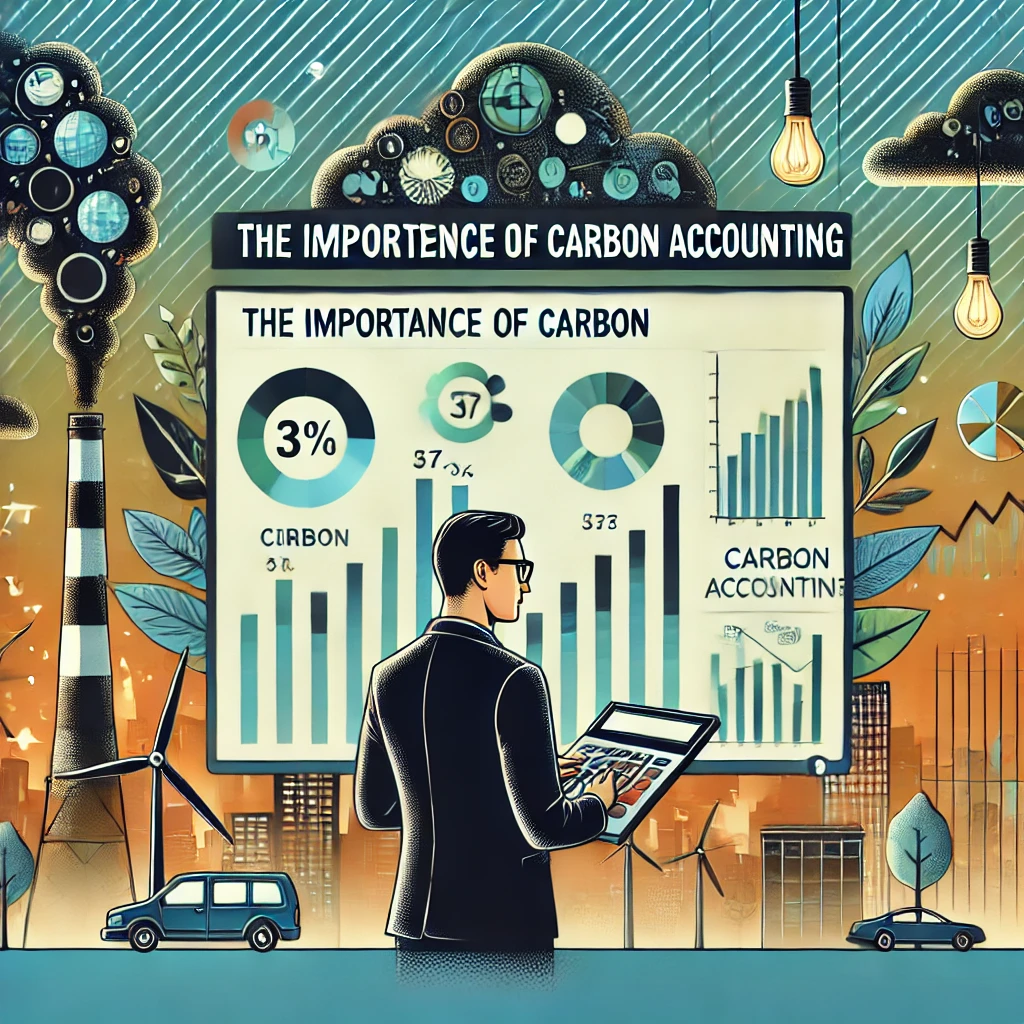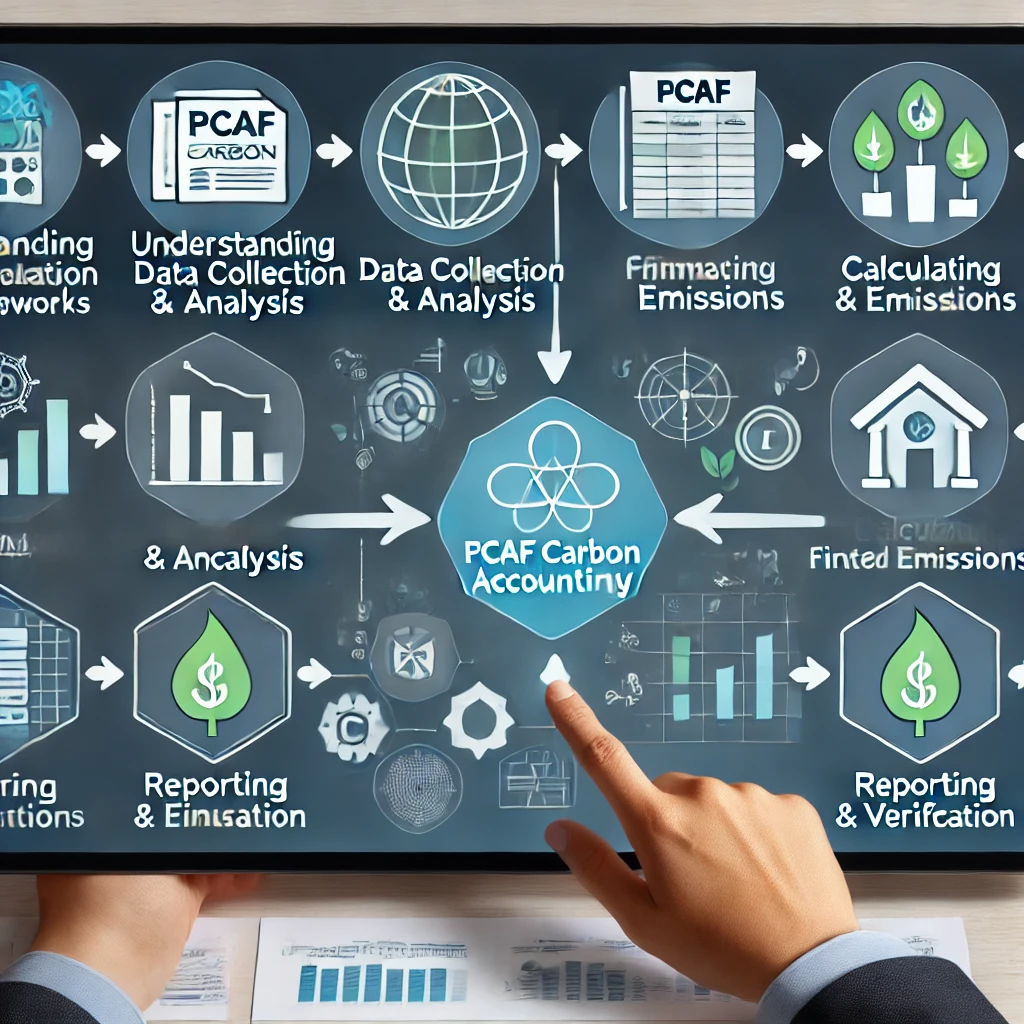Understanding the Purpose of Carbon Accounting for Companies
Making Sense of Carbon Accounting: A No Nonsense Guide
If you’re running a business today, you’ve probably heard a lot about carbon footprints and emissions tracking. Maybe you’re wondering what all the fuss is about, or perhaps you’re feeling pressured by new regulations to get your carbon accounting in order. Either way, you’re in the right place.
What’s Carbon Accounting, Really?
Think of carbon accounting as keeping a budget, but instead of tracking dollars and cents, you’re tracking greenhouse gases. Just like you need to know where your money’s going to run a successful business, understanding your carbon emissions helps you run a more sustainable one.
It boils down to three main things:
- Figuring out how much greenhouse gas your company puts into the atmosphere
- Understanding where these emissions come from
- Keeping track of your progress in reducing them

Why Should You Care?
Let’s be honest – if you’re like most business leaders, you’ve got a million things on your plate. So why add carbon accounting to the mix? Here’s the deal:
First off, regulations are getting stricter. From Europe to the US, governments are asking companies to report their emissions. It’s better to get ahead of this now than scramble to catch up later.
But it’s not just about avoiding trouble with regulators. Many companies find that measuring their carbon footprint leads to discovering inefficiencies they didn’t know about. When you track your emissions, you often find ways to cut energy costs, streamline operations, and run a tighter ship overall.
Plus, let’s face it – customers and investors care about this stuff now. Having solid carbon numbers to back up your sustainability claims can give you a real edge.
Breaking Down the Basics
Types of Emissions
Think of your company’s emissions in three circles:
- The Inner Circle (Scope 1): These are emissions you directly control – like your company vehicles or factory emissions.
- The Middle Circle (Scope 2): This is mainly about the energy you buy – like electricity for your buildings.
- The Outer Circle (Scope 3): Everything else in your value chain – from your suppliers to how customers use your products.
Getting Started
Starting with carbon accounting doesn’t have to be overwhelming. Here’s a practical approach:
- Start with what you can easily measure – usually your energy bills and fuel usage.
- Use good tools – there are plenty of user-friendly platforms like Watershed or Persefoni that can help.
- Build from there – gradually expand to track more complex sources of emissions.

Real Talk: The Challenges You’ll Face
Let’s not sugarcoat it – you’ll run into some hurdles:
- Getting good data can be tough, especially from suppliers
- Some things are hard to measure accurately
- It takes time and resources to do this well
But here’s the thing: perfect is the enemy of good. Start with what you can measure reliably, and improve over time.
Success Stories Worth Learning From
Take Microsoft – they’re not just tracking their current emissions; they’re actually working to cancel out all the carbon they’ve ever emitted. Ambitious? Yes. But they started with the basics and built from there.
Or look at Unilever – they’ve turned carbon tracking into a competitive advantage, using it to make their operations more efficient while building a stronger brand.
Making It Work for Your Business
Practical Tips
- Get your leadership team on board – this works best with support from the top
- Start small but think big – begin with the emissions you can easily track
- Make it part of your regular business reviews – what gets measured gets managed
- Share your progress – both internally and externally
Tools That Can Help
Modern carbon accounting doesn’t mean drowning in spreadsheets. Today’s tools can:
- Automatically pull data from your systems
- Generate reports for different frameworks and regulations
- Help you spot trends and opportunities

Looking Ahead
The world of carbon accounting is evolving fast. New technologies like AI are making it easier to track emissions accurately. Regulations are getting more detailed. But the basics we’ve covered here aren’t changing – if anything, they’re becoming more important.
Wrapping It Up
Carbon accounting might seem like just another corporate obligation, but it’s really an opportunity. It’s a chance to:
- Run your business more efficiently
- Stay ahead of regulations
- Build trust with customers and investors
- Do your part for the planet
The key is to start somewhere and keep improving. You don’t need to have everything figured out right away. Begin with what you can measure, learn as you go, and build from there.
Quick Questions People Often Ask
Q: How much is this going to cost us?
A: It varies, but many companies find that the insights gained actually save money in the long run through improved efficiency.
Q: Do we need special expertise to do this?
A: While having someone who understands carbon accounting helps, many modern tools are designed to be user-friendly. You can start with basic tracking and bring in experts as needed.
Q: What if we can’t get perfect data?
A: Perfect data isn’t the goal when you’re starting out. Begin with what you can measure reliably and improve over time.
Remember, every company that’s good at carbon accounting today started from zero at some point. The important thing is to begin the journey. Where you start matters less than the fact that you start at all.



